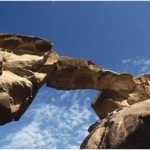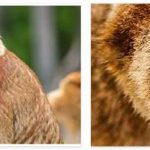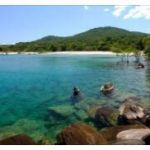| Official language | French |
| Capital | Yamoussoukro |
| Form of government | presidential republic with multi-party system |
| Area | 322.450 km² |
| Residents | 17,300,000 |
| Currency | CFA Franc BCEAO |
| Time zone | UTC |
| License plate | CI |
| Internet TLD | .ci |
| Telephone area code | 00225 (Source: ALLCITYCODES) |
Geography
The R¨¦publique Côte d’Ivoire – also the official state name – is located in western Africa. At 322,450 km², the republic is about the size of Germany and borders on five neighboring countries: in the north on Mali and Burkina Faso (formerly Upper Volta), in the east on Ghana,in the west on Guinea and Liberia. The 550 km long south coast borders the Gulf of Guinea. See Ivory Coast country abbreviation.
The country slowly rises towards the north. In addition to the narrow coastal plain, there are highlands in the west and a central plateau. The eastern section of the coast is characterized by a 2,400 km² lagoon landscape, the western part by rocky peninsulas. The plateau in the interior lies 200 to 500 m above sea level, the highlands in the west as foothills of the Guinea highlands reach a height of up to 1 500 m. Here is the 1,752 m high Mount Nimba, the highest mountain in the country. The current seat of government is in Abidjan, which is one of Africa’s most important metropolises with 4 million residents (agglomeration). The official capital is Yamoussoukro (150,000 residents) inland.
Climate
In terms of climate, the country can be divided into two major regions: the south near the equator, with two rainy seasons, belongs to the region of the tropical, humid monsoon climate. The rains reach their maximum in June, their minimum in August (1,500 to 2,300 mm per year). In the savannah areas in the north, however, there is a unique summer rain from June to October. The rainfall here is up to 1,500 mm per year. In the dry season from December to February, the Harmattan, a dry and hot trade wind from the Sahara, blows across the savannah. The large rivers Cavally, Sassandra, Bandama and Comoe, all of which flow into the Atlantic, have numerous rapids and waterfalls and are therefore only navigable to a very limited extent.The largest lake is the Bandama River, which is dammed north of Yamoussoukro.
The average temperature in the metropolis Abidjan on the Atlantic is 27 °C in January, 26 °C in July, while inland there are greater temperature fluctuations.
Flora and fauna
A 100-265 km wide rain forest belt along the coast shows – despite heavy clearing – over 220 different tree species. Around a quarter of the country is forested. In the immediate coastal area there are large areas with mangrove forests. The south is the agricultural center of the country. In addition to the still important timber industry (veneers, especially mahogany, oil and coconut palms), the climate and vegetation allow the cultivation of numerous crops. In the north and inland there are vast savanna areas with typical grasslands, shrubs and isolated trees. The dry savannah begins in the extreme north on the border with Mali and Obervolta.
The name “Ivory Coast” is reminiscent of the numerous elephants and their tusks. Legal trade in ivory is now internationally prohibited and the greatly reduced elephant population is in the process of recovering. In addition to the elephants, there are other wild animals in the country, including jackals, hyenas, leopards, buffaloes, black eared pigs, chimpanzees, crocodiles, various lizards and poisonous snakes. Much of the country is unsuitable for livestock farming because it is in the distribution area of the tsetse fly.
Population
According to COUNTRYAAH, 17.3 million residents, over a quarter of whom are foreigners, live in the Republic. The official language is French as a legacy from the colonial era, and over 100 different African languages and regional dialects are spoken. The population consists of around 60 peoples. Lagoon tribes live in the south, in the north above all the Gurus senufs. The Mandinke people of the Malinke, Dan and Guru can be found in the northwest, in the center and in the southeast of the country live the Arkan, the largest group of the population with over 40%. The Dyula are spread all over the country, the language of which is largely used as the local vernacular.
Some of the country’s citizens are followers of natural religions. Muslims make up almost 40% of the population nationwide, and they have political supremacy in the north and northeast of the country. Christians make up about 25% of the population.
Life expectancy on the Ivory Coast is only 49 years, which is partly explained by the high HIV infection rate of 7%. Nevertheless, the population grows by 2.05% annually. Only half of the residents can still read and write.

Political system
According to the constitution of 2000, the Republic of Côte d’Ivoire is a presidential republic with a multi-party system. The president, who has been elected for five years (Alassane Ouattara since May 2011), has extensive powers. Since 1990 the cabinet has been chaired by a prime minister (since November 2012 Daniel Kablan Duncan), who is appointed by the president.
A national assembly with 255 deputies is the center of the legislation. The representatives of the people are directly elected every five years.
The administration of the state is divided into 19 regions.
Economy
The main economic activity in the Republic of Côte d’Ivoire is agriculture, which employs around half of the workforce. The rainforest belt has fertile soil that enables the cultivation of numerous agricultural goods. Palm kernels, cocoa and coffee are grown and exported in plantations, as are bananas, rubber, tobacco and cotton. The commercially valuable hardwoods such as mahogany and makor¨¦ are still of economic importance.
In addition to agriculture, industry is also very well developed compared to neighboring African countries, a fact that is evident in the numerous guest workers in the country. The food industry dominates, but also textile companies, building material and fertilizer factories and petroleum refineries are located in the country. There are numerous mineral resources, including gold, iron ore, manganese, diamonds and – in the coastal region – oil and natural gas. The most important trading partners are Nigeria, France, the USA, the Netherlands and China. The hydropower plants on the rivers have an important share in the electricity production.
A well-developed transport network, three international airports and the port of Abidjan also make the republic an important transit country for neighboring countries located in the interior of the continent.
The currency is the CFA franc.







